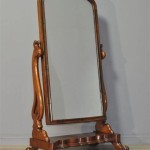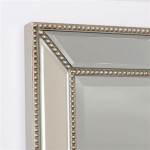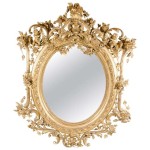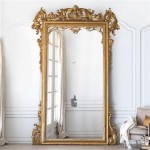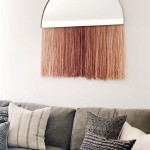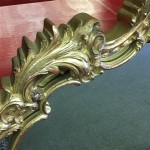How To Spray Paint A Mirror
Spray painting a mirror offers a simple way to update or repurpose an existing mirror to fit a particular aesthetic. Whether aiming for a vintage, distressed look or a sleek, modern finish, the proper technique and materials are essential for a successful outcome. This article outlines the steps involved in effectively spray painting a mirror.
Preparing the Mirror
Preparation is critical for achieving a professional-looking finish. Any dust, dirt, or fingerprints can interfere with the paint's adhesion, leading to an uneven or blotchy result. The mirror surface should be thoroughly cleaned with glass cleaner and a lint-free cloth. This ensures that the paint adheres correctly and creates a smooth, even coat.
Masking Off the Reflective Surface
Protecting the reflective surface of the mirror is crucial. This is accomplished using masking tape and/or paper. Carefully apply the masking material to the areas of the mirror that are to remain reflective. Press the edges firmly to prevent paint seepage. The precision of this step directly impacts the final appearance.
Selecting the Right Spray Paint
The type of spray paint selected will significantly affect the final look and durability of the project. Specialized spray paints formulated for glass or highly reflective surfaces are recommended. These paints are designed to adhere properly to smooth surfaces and provide a more durable and even finish compared to standard spray paints. Consider the desired finish, whether glossy, matte, or metallic, when choosing a paint.
Creating a Suitable Work Environment
Spray painting is best carried out in a well-ventilated area, preferably outdoors or in a well-ventilated garage. This minimizes the inhalation of paint fumes and also helps prevent dust and debris from settling on the wet paint. A drop cloth or newspaper should be laid down to protect the surrounding area from overspray.
Applying the Spray Paint
Holding the spray can approximately 10-12 inches away from the mirror, apply thin, even coats. Multiple thin coats are preferable to one thick coat, as this prevents drips and ensures even coverage. Avoid holding the can in one spot for too long, as this can lead to excessive paint buildup in that area. Allow each coat to dry completely before applying the next.
Drying and Curing Time
Adequate drying and curing time is essential for a durable finish. Consult the manufacturer's instructions on the spray paint can for the recommended drying and curing times. This typically ranges from a few hours to a full day. Avoid touching or handling the painted surface during this period to prevent smudging or damage.
Removing the Masking
Once the paint has fully cured, carefully remove the masking tape or paper. Peel slowly and steadily to prevent lifting the paint. If the paint appears to be lifting with the tape, using a sharp utility knife to score the edge of the tape can help prevent this. This reveals the reflective surface underneath, completing the desired effect.
Troubleshooting Common Issues
Several issues can arise during the spray painting process. Drips can be rectified by gently sanding the affected area with fine-grit sandpaper once the paint has dried and then applying another thin coat. Uneven coverage can be addressed by applying additional thin coats, ensuring even distribution. If the paint peels off with the masking tape, this indicates insufficient drying time or inadequate adhesion. Ensuring the mirror is thoroughly clean before painting and allowing adequate drying time between coats and before removing the masking tape can prevent this.

Diy Mirror Effect How To Do Aged Tutorial Old Maple Home

Spray Painted Gold Yard Mirror How To Paint A Frame

How To Spray Paint A Mirror Step By Guide

Spray Painted Rainbow Mirror Makeover Colorshot Paint

How To Paint A Mirror Frame Gold Easily In Two Steps

How To Paint A Mirror Frame

Pottery Barn Inspired Mirror Krylon Looking Glass Spray Paint Dorsey Designs

Spray Paint A Mirror Frame

How To Update Decor With Spray Paint

How To Spray Paint A Mirror

